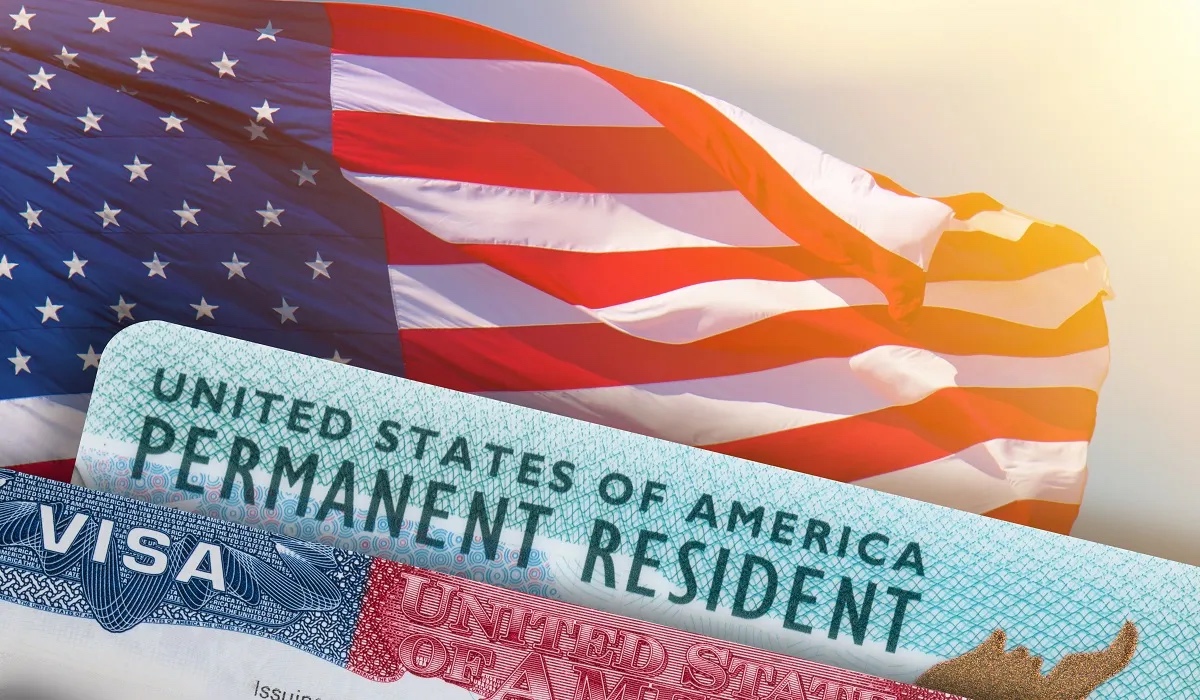If you are a U.S. Green Card holder planning to travel abroad for an extended period, you need to understand the importance of a reentry permit. Leaving the United States for too long can lead to a presumption that you abandoned your permanent resident status. A Green Card reentry permit is a clear indication to the U.S. government that you intend to remain outside the United States for an extended period, and the United States will permit you to do so with its permission. This will protect your status when you need to be outside the U.S. for an extended time. In this comprehensive guide, we’ll explain what a reentry permit is, who needs one, how to apply, and tips to ensure you maintain your lawful permanent residence while abroad.
What Is a Green Card Reentry Permit?
A reentry permit is essentially a passport-like booklet issued to lawful permanent residents (Green Card holders) that allows re-entry into the United States after long trips abroad. It signals to U.S. Customs and Border Protection (CBP) that you intend to return and continue your U.S. residency, even if you have been away for many months. In practical terms, a reentry permit prevents your Green Card from being considered “abandoned” due to an extended absence. With a valid reentry permit, a Green Card holder can generally stay outside the U.S. for up to two years and still be readmitted without needing additional visas.
Importantly, the reentry permit does not replace your Green Card; you should carry both when you travel. It also doesn’t guarantee entry – you must still be admissible and convince the CBP officer you are returning to reside in the U.S. – but it greatly strengthens your case. In some situations, a reentry permit can even serve as a substitute passport. It can ensure that Green Card holders do not lose permanent residence if outside the country for an extended period.
Why Do You Need a Reentry Permit?

Extended Travel Risks: U.S. permanent residents are free to travel, but staying abroad too long can jeopardize your status. The Immigration & Nationality Act provides that absences of over 6 months may demonstrate the Green Card holder’s abandonment of their permanent residence in the United States. In such a circumstance, an individual who has remained outside the United States when returning may face additional questioning in secondary inspection. In those instances, the presumption may be overcome. However, the statute also sets forth that absences of 1 year or more make a permanent resident legally inadmissible. Consequently, an absence from the U.S. for over a year without a reentry permit may result in CBP viewing such individuals as having abandoned permanent residency and being denied reentry. To come back, in that case, you would have to apply for a special returning resident visa (SB-1) from a U.S. consulate – a difficult and time-consuming process. A reentry permit prevents this scenario by preserving your ability to return without needing an SB-1 visa.
Who Should Get One: You should strongly consider a reentry permit if you plan to be outside the U.S. for any single trip longer than one year or for absences from the United States between 6 and 12 months. In addition, multiple lengthy trips or an absence approaching a year, and those which seem to indicate residence outside the United States, can cause issues at the time of entry. A reentry permit is a wise precaution for peace of mind and a means to maintain permanent residence status. Common situations include: work assignments abroad, studying overseas, caring for an ill family member in another country, or winding down a business overseas. These are valid reasons to be away, and obtaining a permit helps demonstrate to U.S. authorities that your trip is temporary and you intend to return to your U.S. home.
On the other hand, short trips under 6 months generally do not require a reentry permit – your Green Card alone is sufficient. But you should still maintain evidence of your ties to the U.S. (home, job, family, tax filings, etc.) during any extended time abroad. Keeping strong ties can help rebut any claim that you gave up your residence. If you expect to be away longer than 2 years, you will need to obtain a second reentry permit, as 2 years is the maximum validity of a reentry permit, although it can be issued for a shorter period. If your plans change and you remain abroad beyond the permit’s expiration, that can trigger the loss of a Green Card, and the individual would need to return to the United States prior to its expiration. Failure to do so would require obtaining an SB-1 returning resident visa, which is extremely difficult and often rejected by the US Consulate.
Important: Even with a reentry permit, you should avoid doing anything that suggests you’ve moved away permanently. U.S. border officials can still conclude you abandoned your residence if there’s other evidence of that intent. For example, selling your U.S. home, moving your family and assets abroad, or not filing U.S. taxes could undermine your reentry permit. Always maintain clear connections to the United States while you’re gone (such as keeping a U.S. address, bank account, job, or business and filing resident tax returns) to show your absence is temporary.
How to Apply for a Reentry Permit (Form I-131)
Applying for a reentry permit is a multi-step process that should be started well before you plan to leave the United States. Here’s how to get your permit:
- File Form I-131 with USCIS (before you leave the U.S.). To request a reentry permit, you must submit Form I-131, Application for Travel Document to U.S. Citizenship and Immigration Services (USCIS) while you are physically in the United States. You cannot apply from abroad – if you try to file after you’ve left, the application will be denied. Plan ahead and send in the I-131 at least 60 days before your trip, if possible.
- Pay the filing fees. The standard government filing fee for a reentry permit (Form I-131) is $575, and there is an additional $85 biometrics fee for fingerprinting (required for applicants ages 14 to 79). So, most applicants will pay a total of $660.
- Attend your biometrics appointment in the U.S. After USCIS receives your application, they will mail you an appointment notice for biometrics (digital fingerprints and biometric photograph). This appointment will be at a local USCIS Application Support Center. You must attend this biometrics appointment in person; if you miss it because you left the U.S. too soon, your application could be denied. It is possible that the USCIS will re-use biometrics previously captured and, if so, will advise you by notice.
- Processing time – wait for approval. Processing times can vary, but at this moment, it is an extremely long process, with the government advising that it can take over 14 months to approve.
- Receiving the reentry permit. A reentry permit is often mailed to a US address; although approved, it can be requested for delivery to a US consulate, in which case a notice will be provided to pick it up there.
Get Expert Help with Your Reentry Permit Application
Applying for a reentry permit can be complex, particularly when considering the different laws that apply. On the one hand, travel outside for over six months can lead to the loss of permanent residence, and on the other hand, processing is now taking more than a year. In addition, a substantially greater interface at the border increases the risk. It is much better to not have to navigate it alone. Oltarsh & Associates, P.C. is a trusted New York immigration law firm with decades of experience helping Green Card holders safeguard their status and handle immigration paperwork correctly. Our knowledgeable attorneys can guide you through every step – from determining if it is advisable to obtain a reentry permit to preparing a strong Form I-131 application to advise you on timing your travel and biometrics.
At Oltarsh & Associates, P.C., we pride ourselves on providing personalized, responsive service. If you have questions about reentry permits or any other immigration matter, our team is here to answer them. Before you embark on that overseas assignment or family visit, reach out to us for a consultation.
Contact us today to learn how we can help you obtain a reentry permit and address all your immigration needs. Safe travels, and we look forward to assisting you!





